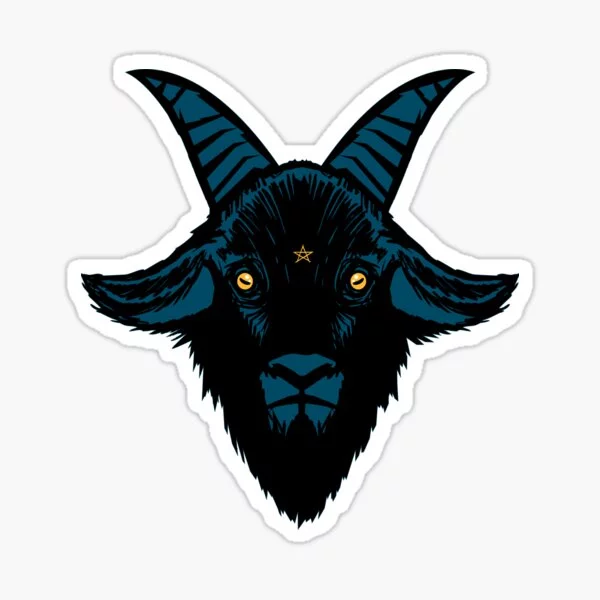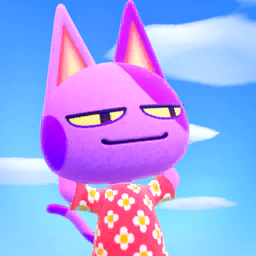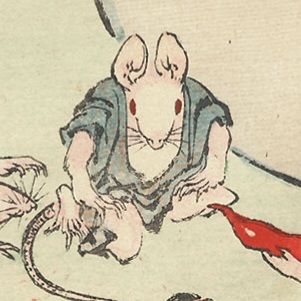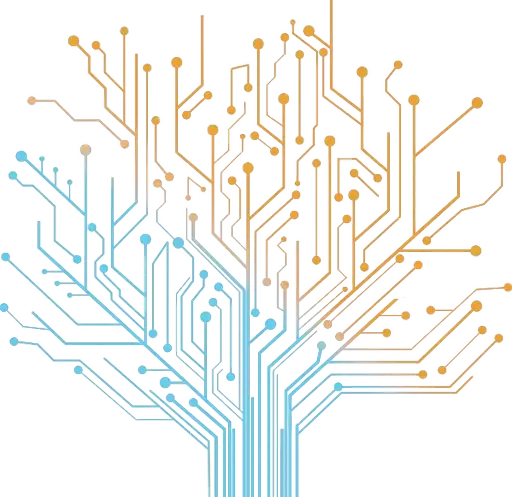With all the fuzz about IA image “stealing” illustrator job, I am curious about how much photography changed the art world in the 19th century.
There was a time where getting a portrait done was a relatively big thing, requiring several days of work for a painter, while you had to stand still for a while so the painter knew what you looked like, and then with photography, all you had to do was to stand still for a few minutes, and you’ll get a picture of you printed on paper the next day.
How did it impact the average painter who was getting paid to paint people once in their lifetime.
Well, photography basically replaced the Joe Average Portrait Painter. And then art took a turn to paint the unphotographable.
One topic that hasn’t been raised in this thread is the effect of photography on artistry. Due to having a medium that could, well, photographically depict reality, painters changed in the way they depicted reality.
In the beginning expressionism, pointillism and so forth became more prominent. It was not recreating reality, it became infused with the emotion of the artist. Van Gogh, for instance, did not do realism at all, but showed how he felt through his work.
Later styles got more abstract, like cubism, dadaism and surrealism in the beginning of the twentieth century. Later abstract expressionism, minimalism and pop art.
So photography changed the way painting was executed, it forced the artists to reinvent what painting was.
New media change the meta, that’s what’s most exciting to see. How people will find new methods of expression given the updated tool set.
I don’t have anything to add here; I’m an engineer, not an artist. But I just want to say this is one of the best questions and resulting conversation I have seen on Lemmy so far. Definitely not a stupid question, Ziggurat!
Thanks for the feedback, the question was triggered by a discussion in another thread, and it was the opportunity to post some content here
AI isn’t stealing jobs any more than cheap clip art has. The only people who would resort to AI for illustration stopped hiring actual artists ages ago, they buy from shutterstock and the like instead.
The reason artists are pissed id because they used our art to train the AI without our permission. And no, its not the same thing as an artist learning from others, first because of the scale, and second because a student who is learning from other artists isn’t looking to copy an existing style, they’re learning and developing their own. AI just regurgitates what it already knows and attempts to imitate the style of an actual person. It was developed specifically to do that.
If a human being copies the style of another artist rather than develop their own, they’ll be called out too. No one has ever been okay with that, ever.
I’m not an expert but i learned about this at university one or two years ago. I’m not entirely sure of what i’m saying though, so take my word carefully and feel free to correct me.
From what i recall -and i think at least in western europe, i don’t know for other places-, before photography, it was quite expensive to get a portrait or a family portrait, mostly because of the time needed to pose. So it was something only nobles or rich bourgeois family could afford.
Then photography was invented. At first, it was mostly an amateur hobby : you had to be a handy(wo)man to get all the components needed, and in first times even to build your own device. There were no schools, no official degree, knowledge only passed from person to person.
So first “professional” photographers (i mean the first one to get paid) were not exactly professionals, most had no previous clients, or anything. Of course, their prices were much low than painters, so increasing number of people came to their shop. But it was for the most part “new” customers, middleclass people or families, would previously could not afford paintings.
So at first, they did not really stole painters’ jobs, they rather extended access to portraits to a new part of population. Now, when it became more popular, the less rich clients of painters tend to switch to photography : it felt modern, it was a kind of trend, and it was cheaper.
At that point, some of the painter’s client disappeared. But there were mostly two situations : big and renowned painters still got jobs, because noble people kind of considered photography a thing for common people. Modest painters, who had client amongst bourgeois, began to lose their jobs. I think that a part of them switched to photography at that point : i also think this is were photo editing began, because they could use their painter/drawer skills to erase or slightly modify the picture when it wasn’t “dry” (don’t know the specifics of photography at that time ^^').
So overall, if you compare like the XVII century and nowadays, of course painters lost their jobs. But from what i (think i) know, transition was pretty smooth, as it let time to painters to continue to paint for upper classes or to convert to photographers.
I pretty much agree with other people, not sure if the comparison with AI is perfect. But at least I think it might show that new techs mostly comes with two effect : replacing previous practices and creating new ones (or at least opening them to new people).
Just to add some cool etymology to your reply: the word silhouette comes from a type of affordable portrait made by quickly painting or cutting out a persons profile in black paper. These, and portrait miniatures, fell quickly out of favour with the advent of photography.
The word silhouette is derived from the name of Étienne de Silhouette, a French finance minister who, in 1759, was forced by France’s credit crisis during the Seven Years’ War to impose severe economic demands upon the French people, particularly the wealthy.[3] Because of de Silhouette’s austere economies, his name became synonymous with anything done or made cheaply and so with these outline portraits.[4][5] Prior to the advent of photography, silhouette profiles cut from black card were the cheapest way of recording a person’s appearance.[6][7]
https://en.wikipedia.org/wiki/Silhouette
This is also an interesting article on the subject of pre-photographic portraiture: https://en.m.wikipedia.org/wiki/Portrait_miniature
Also illustrators for newspapers - as the tech for mechanical reproduction made it possible to put photographs into newspapers and magazines most of those jobs disappeared.
I read an article on PC Gamer just the other week where one of the prominent D&D artists said AI was already impacting his work. And not just in the usual way of stealing away jobs, but also, by damaging their artistic reputation by people generating ai artworks in their style, and people not knowing what was or wasn’t actually his.
A discussion around the extent to which painters were replaced by photographers (and professional photographers replaced by laypersons with smartphone cameras) isn’t going to quite be the same as a discussion about human illustrators being potentially replaced by “AI”.
I suspect the words “soul” and “character” (and derivatives thereof) to turn up more.
I imagine a better analogy would be scribes talking about the printing press.
Prior to the invention of the printing press, the endeavor of mass creation of copies of a book could employ dozens of highly trained, highly skilled workers whose recreations were frequently seen as an artistic endeavor as much as a literary one. When the printing press was introduced and didn’t carry illustrations in the margins or nice little flourishes on some of the letters, the works were considered “soulless” and “without character”
I think the key difference is that the words put out via printing press were still arranged the way they were by human hand.
The painting and the photograph are framed by human eyes.
The output of an “AI” seems different because it seems that there is less (of potentially no) human input. I say “seems” because that may or may not be true. If a human guides the AI with instructions, is that enough?
In my line of work, AI is coming. I see it as a friend in silico
I don’t disagree that it feels way different, and honestly I’m still not sure if it’s going to be a good thing or a bad thing.
But are the words you and I are writing a lesser form of communication just because we’re tapping a screen or typing on a keyboard rather than writing them out by hand?
Granted, it’s still not the same thing. These are my words being arranged to my liking, but will we one day look at AI art as an extension of our hand the way that a keyboard is?
Is the world a better place because the commodification of art is monopolized by AI, or will art be better for the fact that it’s only practiced for the love of art and more bespoke purposes?
This subject is super complex and philosophical and definitely something I hope I live long enough to see the resolution to, some day.
What if I tasked an LLM with replying to your comment? Say I instruct it to provide something with an agreeable tone and I pick one out of two or three drafts.
Is it still me?
I suppose that by that point it’s not much different than having a speech writer…
Comparing the emergence of photography to that of AI is a bit like comparing a nuclear explosion to an all-out nuclear world war. There are magnitudes of difference. You can say, humanity didn’t get wiped out because of nuclear bombs or power plant failures so far. But what would you think if everyone today starts nukeing their neighbours?
Photography made an impact, but not like AI. You need to take into account that technology, goods, and resources moved at different speeds back then. Today, anyone can access a camera. And AI for that matter. Back then, it required a certain status, having money to purchase it, learning how to develop the photos, etc. It was a gradual change, not one that swept the rug under everyone’s feet.
And yes, painters did lose part of their jobs as portrait painters, but not too much because those who could afford a portrait to begin with, were the wealthy. And the quality of a photo, then, wasn’t always better than a painting. Which meant the wealthy still commissioned art for one reason or another.
Art gradually shifted towards printing and advertising, so taking all these factors into account, you could say that only portrait painters suffered less demand, but art overall was getting more and more commercial for other reasons.
AI in contrast just popped out of nowhere a couple of years ago and keeps perfecting itself at an incredible rate. It’s so broad it what it can represent that it will affect all sorts of artists, not just this one specific subset.
Thank you for this comprehensive response. Out of interest, do you think that certain artist jobs/genres will survive? For example, I would imagine that humans can innovate better than an AI trained on existing data. So perhaps we’ll see a shift towards more human-created modern/post-AI art?
It’s difficult for me to make a prediction like that. I figure the next generation of artists- which we’ll see mature in some 20 years- is going to be nothing like what we’ve seen so far. I believe having actual skills in art will become irrelevant and outdated. It will survive, the same way we still have people enjoying horse riding and archery but it won’t be a determining factor on art as a final product.
Humans will surely be directing the way art evolves but AI will do the heavy lifting. Considering we have technology capable of putting thought (and I mean brain activity, not words, but actually thoughts) into images and words, it’s just matter of time before art becomes something anyone can produce just by thinking about it.
The problem for me isn’t so much copyright or how it will evolve, but this sudden transition phase which will drive to extinction the process of art as we know it. Well established artists today are probably going to stay the same, and the new ones as I mentioned will grow up with these new technologies so that won’t be a problem, long term.
My concern goes for artists who just got started and who can’t embrace AI as part of the process. It’s gonna be rough. It’s like asking someone to stop listening to their favorite music and switch to some new genre they have no love for. Considering artists are usually more sensitive (psychologically) than people without artistic inclinations, I’m worried for their mental health, not just the financial. AI is damaging the sense of self worth of many talented people and that’s going to have consequences.
I feel like people will still continue to draw/paint etc. for the enjoyment of it but perhaps it will be a less viable career choice. Current artists will feel more and more pressured to incorporate some level of AI generation into their process, before they become overtaken by those who have adapted. That could start out as people using AI generated textures or backgrounds within their art for example.
Yes absolutely, and that’s already happening.
You forgot a massive step in-between: Digital art / Photoshop.
Which already vastly sped up art creation and made it easier (when you can just use special brushes instead of having to spend hours doing a pattern by hand).
And even though it’s a lot easier, you still need artists to produce proper products. Good artists and designers will keep their jobs in the foreseeable future, while more simple one-shot works can be done by AI.
I really hope you are right about the last paragraph. About the rest, I didn’t forget, I didn’t mention it as it’s not what OP made the comparison to.
But you make a good point about digital art creating more disruption to the status quo than photography did. However, AI is still an on steroids comparison if you ask me. You still need to invest a massive amount of time and practice to get good at digital. Creating a whole image can take hours , days, months. And if you don’t understand what makes it look good, it won’t. This is not the case with AI. You don’t need art skills. It helps if you do, it gives you more control to manipulate a result, but the quality you get from the beginning is on another level.
You only get good quality if you use the right model, the right keywords, the right negative prompt, the right settings, … and then it can still be pure luck.
If you see a high quality AI image that actually looks good (not just parts of it, but the whole composition) then someone probably spent hours with fine-tuning and someone else spent weeks to customize the model.
And even if you’re good at that, you’ll never get exactly the image you had in your mind. Especially as most models are heavily biased (You can create a portrait of a busty beautiful woman, but the second one you create probably has a very similar face).
This might get better relatively fast, but right now AI art is not a replacement for good artists. Especially if you need more than one image with consistency between them.
It’s more like a superpowered Photoshop where you can mess around with and get cool results, just that instead of filters or a magic stamp you generate the entire image.
Super cool tech, but of course artists feel threatened. Except the popular ones who already drown in commissions.
I get your point, but the rate of improvement is jaw dropping. Two years ago you wouldn’t be getting these results. In two years from now, I’ll be able to add something like a rough sketch or perhaps two images to be used as reference for pose or light or color palette, add what I want in words, and get the results. And the images of course could be pinched from anywhere. Sure, your idea may not be replicated fully but you would be very close. And more often than not, people don’t have a clear cut idea of what they want before making art, and/or they’re open to changes on the spot, accidents, etc. So that doesn’t really make a difference in the argument.
I don’t think there has ever been any other tool that progressed faster than this. I’d be really surprised to see it plateau as it is right now. That’s the threat yes.








